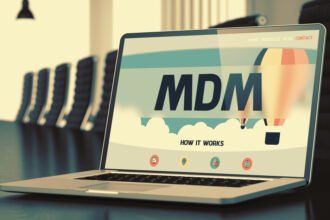A lot of our new clients have asked us to build MDM business cases to support their merger and acquisition strategies. Specifically, they’re looking to support the following four activities:
- Recent corporate mergers
- Acquisitions
- Reorganizations
- Spin-offs
Collectively, these activities can roll up into a category called corporate restructuring. Contrary to popular belief, restructuring isn’t just a financial challenge. It includes realignment of marketing activities (for instance, reconciling promotions and re-aligning diverse product sets), sales (reorganizing territories and compensation plans), and operational issues (company locations, product inventories).
Most companies approach restructuring as a one-time-only activity in which an army of analysts tries to reconcile financial structures from organizational hierarchies, to budgets, to the accounts themselves. The fact is these activities aren’t just part of high-profile M&A events. They occur every year as companies go through their annual budget processes. During a corporate restructuring the process usually takes longer than the acquisition itself.
Three principle MDM features lend themselves to this restructur…
A lot of our new clients have asked us to build MDM business cases to support their merger and acquisition strategies. Specifically, they’re looking to support the following four activities:
- Recent corporate mergers
- Acquisitions
- Reorganizations
- Spin-offs
Collectively, these activities can roll up into a category called corporate restructuring. Contrary to popular belief, restructuring isn’t just a financial challenge. It includes realignment of marketing activities (for instance, reconciling promotions and re-aligning diverse product sets), sales (reorganizing territories and compensation plans), and operational issues (company locations, product inventories).
Most companies approach restructuring as a one-time-only activity in which an army of analysts tries to reconcile financial structures from organizational hierarchies, to budgets, to the accounts themselves. The fact is these activities aren’t just part of high-profile M&A events. They occur every year as companies go through their annual budget processes. During a corporate restructuring the process usually takes longer than the acquisition itself.
Three principle MDM features lend themselves to this restructuring work: matching, grouping, and linking. MDM excels at matching “like” items from disparate sources, tracking and managing hierarchies and groupings, and linking disparate data sources to enable ongoing data integration. The point is that the act of merging organizations also means consolidating details across the companies. Most people consider this a one-time-only activity. The fact is, it must be an ongoing process.
When one company buys another, it’s typical to allow the acquired company to continue to operate using the same systems and methods it always has. The acquiring company simply needs to know how to integrate the information into their existing business. Consider Berkshire Hathaway. It acquires companies frequently, but doesn’t change how it runs their businesses. It simply knows how to reconcile and roll up the details.
Ideally, corporate restructuring means establishing a process to allow organizations to continue their operations using their existing systems. IT systems reconciliation simply cannot get in the way of running business operations. All too often, the answer is, “Replace their systems with ours.” This statement means that the new organization should re-engineer its business. This simply takes too long.
MDM provides a company the capability to link the data content from disparate systems within and across companies. I’m not talking about linking Linux with Windows, I’m talking about matching and linking business content across dozens or even hundreds of systems. This way invoices continue going out, sales people continue getting commissions, and customers can still get product support in a seamless way.
Next time you’re discussing corporate restructuring and someone says the word “re-platform,” ask the question, “If we can link and move the data to continue to support core business processes, then we wouldn’t have to disrupt our operational systems, right?” Matching and linking the data across core systems can save a lot in terms of software and labor costs. But improving it where it lays? Priceless.







